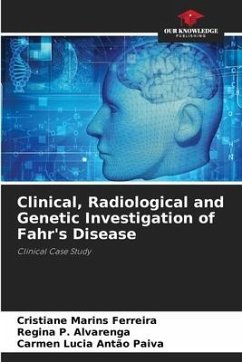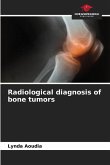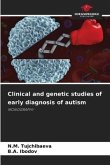Fahr's disease (FD) or Familial Primary Calcification of the Basal Nuclei is a rare neurodegenerative disease, with an incidence of less than 1 in 1 million inhabitants (SALEEM et al., 2013) worldwide, autosomal dominant, characterised by symmetrical and bilateral calcifications in the basal nuclei (nb) and other areas of the cerebral cortex, thus allowing for diverse clinical presentations, mainly with extrapyramidal and psychiatric symptoms. In recent years, mutations in four genes have been identified as causing the disease (SLC20A2, PDGFRB, PDGFB and XPR1) allowing for a specific genotype-phenotype correlation as shown in Table 1 (TADIC et al., 2015). The author of this research is a neurologist working in the field of neuropediatrics. Through clinical history and examinations, she identified the likelihood of FD in the proband and found ways to develop this work in postgraduate studies.
Bitte wählen Sie Ihr Anliegen aus.
Rechnungen
Retourenschein anfordern
Bestellstatus
Storno








